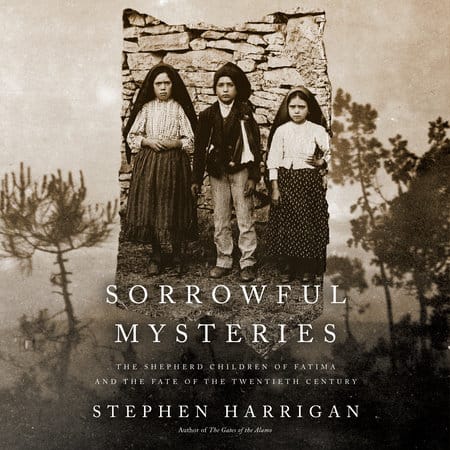My NYT review of Stephen Harrigan's Sorrowful Mysteries

I'm in the New York Times today with a review of Sorrowful Mysteries, a history/memoir by the journalist, novelist, and screenwriter Stephen Harrigan. The book is a fluent and engaging account of the Marian apparitions at Fatima in 1917, the world-rattling fears inspired by the so-called Fatima Letter, and Harrigan's incomplete attempts to free himself from the anxieties of his Cold War Catholic boyhood.
Sorrowful Mysteries is not a book for anyone eager to hold on to their faith in the Fatima miracle. (Much to his credit, Harrigan tells us early on that he doesn't think anything supernatural took place.) It's not even really a book about religious belief: Harrigan was still a boy when he had his first serious doubts about the existence of God, and he abandoned Catholicism for good after oversleeping a Mass in college. It is, however, a thoughtful reckoning with the way his religious upbringing used mystery and fear to compel what I can only call an unholy obedience.
Here's an excerpt of my review:
The mystery of the Fatima Letter, also known as the Third Part of the Secret, is the anguished heart of “Sorrowful Mysteries,” the hinge between Harrigan’s thoughtful (and appropriately skeptical) history of the alleged miracles and his own moving recollections about the terror he felt growing up in the double shadow of nuclear and theological apocalypse.
The letter’s contents seemed to the young Harrigan to be “the most important revelation that could ever occur in our lifetimes,” and that impression was only reinforced when a nun told him that the pope had “decided that what it said was so terrible that nobody could ever know, and put it right back in the envelope and sealed it up again.”
Except that wasn’t quite true. When Pope John XXIII did open the letter, in 1959, a few months ahead of schedule, he was apparently so unimpressed by its “abstruse locutions” that he sent it off to be buried in the Vatican archives. By then, however, it was too late to dispel the specter of a secret too horrible for public consumption.
Such was the letter’s grip on a certain kind of Catholic psychology that when the Vatican finally released its text in 2000 — a short and anticlimactic “mystical word stew,” as Harrigan describes it — conspiracists insisted that the church must have suppressed part of Mary’s prophecy.